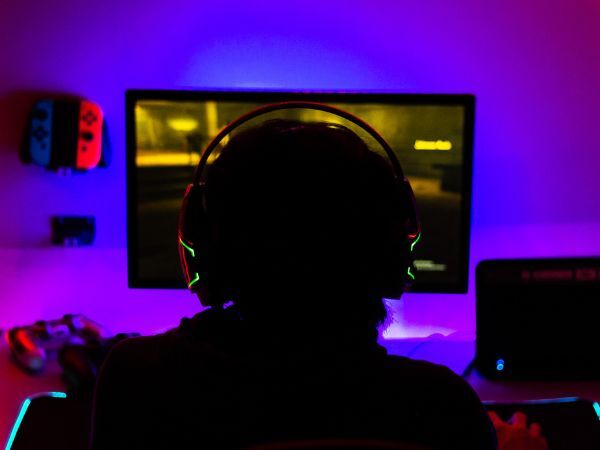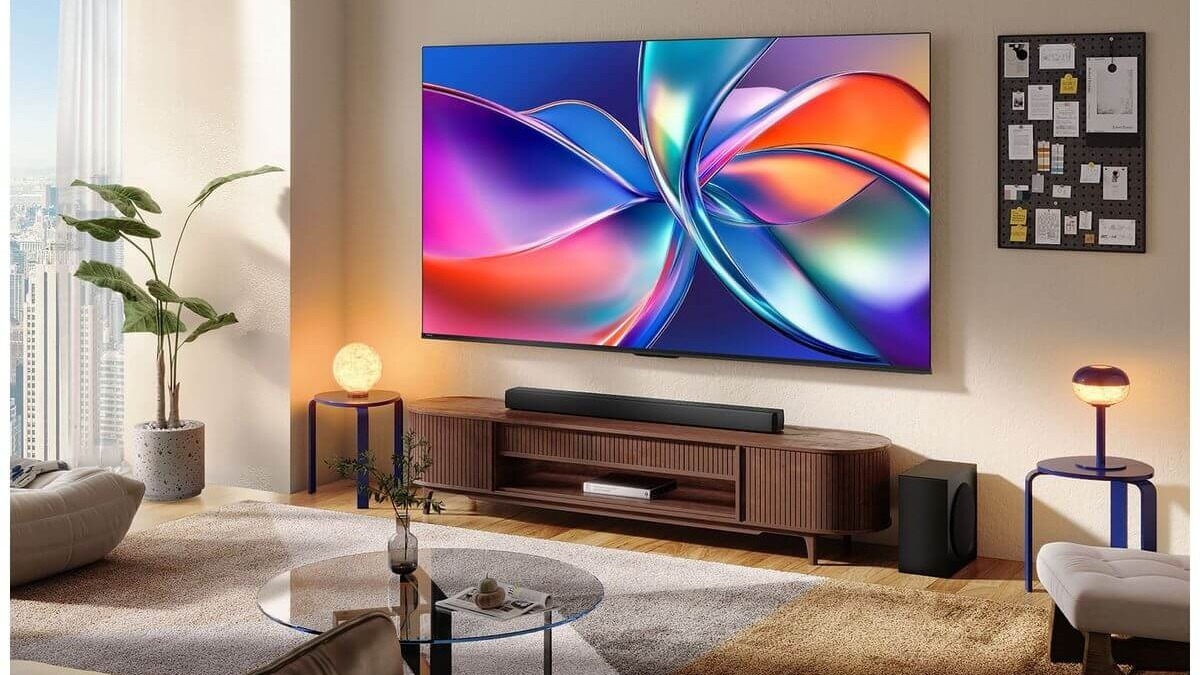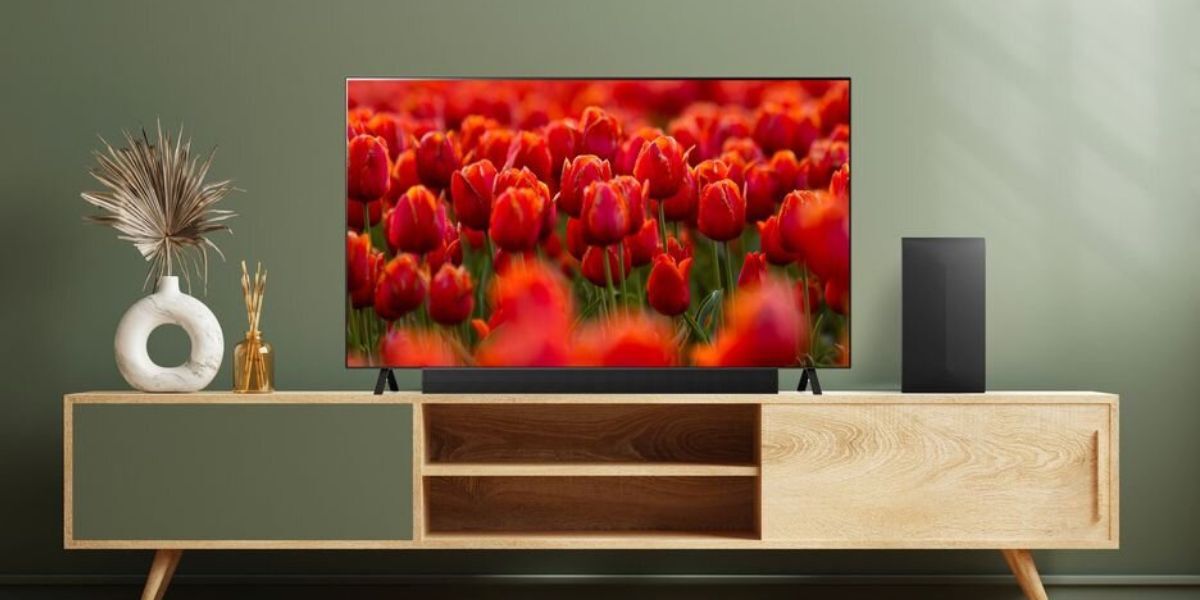
TV, Audio & Electronics
From movies and music to streaming and gaming, let's talk TV, tech and home entertainment!
TV, AUDIO & ELECTRONICS | 12 SEPTEMBER, 2024
6 MIN READ
What’s the difference between HDR10+ vs Dolby Vision?
A small difference between these playback technologies may affect movie buffs' and gamers’ choice of TV.

Several things impact the quality of the image you see on your TV, from the number of pixels on the screen (resolution) to the inbuilt display technology (LED, OLED, QLED and others) and backlighting. There’s another aspect, though, that’s sometimes overlooked: the playback technology.
In this article, we look at what playback technology does, and compare the two options used in most TVs you’ll buy today: Dolby Vision and HDR10+.

What is playback technology in TVs?
Playback technology is essentially the software that optimises colours and contrasts in shows and movies for vibrancy and realism. It works in tandem with the TV’s display technology ‘hardware’ - the screen itself - to present colours and contrast in the most true-to-life manner.
Playback technology started to gain momentum when High Dynamic Range (HDR) imaging techniques were first applied to high definition televisions (HDTV) in the late 2000s and early 2010s. Since then, it has undergone significant advancements, and today, the two primary players are Dolby Vision and HDR10+. Televisions that support these technologies are considered to be HDR TVs.

Dolby Vision vs. HDR10+
Dolby Vision and HDR10+ are very similar in their functions, using dynamic metadata (specific display information) to optimise colour, contrast and brightness, scene-by-scene. HDR10, the predecessor of HDR10+, used static metadata to set the maximum brightness and luminescence once at the beginning of the content, rather than scene-by-scene.
Whichever of these two playback technologies your TV uses, it enables it to deliver a more nuanced and immersive viewing experience than an older TV using standard dynamic range (SDR) playback technology.
While both Dolby Vision and HDR10+ play the same role, they do have some slight distinctions. When used to create content, Dolby Vision supports a higher peak brightness (measured in ‘nits’), which provides an extra layer of realism in scenes with extreme lighting conditions, like bright skies or dark shadows. Content filmed using this technology is optimised to display at its best on TVs with Dolby Vision playback, though it will also come very close in quality when played on HDR10+ TVs.
If, for example, a show filmed in Dolby Vision was played on a TV with Dolby Vision playback, and on another TV with otherwise identical specs but HDR10+ playback, the telly with Dolby Vision may provide a slightly superior viewing experience. Conversely, content filmed in HDR10+ may display slightly more as intended on TVs with HDR10+ playback.
The difference, however, is that Dolby Vision's early adoption and partnerships with major studios and streaming services have positioned it as a leading HDR format for premium content. Content creators for streaming services like Netflix, Amazon Prime Video, and Disney+ often produce HDR content using Dolby Vision technology. This makes it likely that more, though by no means all, of the shows and movies you want to watch will be optimised for Dolby Vision playback.
Meanwhile, HDR10+ does have the advantage of being an open standard HDR format, which means that any manufacturer can implement the technology in their TVs without having to pay the type of fees involved in licensing Dolby Vision. Having said this, Dolby Vision is not exclusive to high-end TVs, with entry level models from brands such as Hisense and TCL using Dolby’s playback system.
Advantages for different content
Whether you prefer to have Dolby Vision or HDR10+ in your telly might also be influenced by the type of content you use it for. For movie buffs, Dolby Vision's superior brightness and colour depth can enhance the cinematic experience. If you’re more of a gamer, though, the fact that HDR10+ is the open standard means that it may have greater compatibility with a broader range of gaming devices.
TV for the Old El Paso girl
Still not sure which side to take in the playback format war? As the little girl from the Old El Paso ad would say ‘Why not have both?’. While some manufacturers have Dolby Vision in some of their models and HDR10+ in others, other brands incorporate both Dolby Vision and HDR10+ in the same TV. TCL and Hisense, for example, have a number of competitively priced TVs that incorporate advanced features, including support for both playback technologies.
This allows them to cater to a broader audience, ensuring that any discerning customer - like yourself - who appreciates the nuances of playback technology, can enjoy the best picture quality for whichever TV show or Blu-ray movie they might be watching.

The right playback tech
Whether you're diving into the latest Dolby Vision content on your Samsung TV or enjoying HDR10+ gaming on your Sony OLED Android, the playback technology is working away to optimise your experience.
For most people, the type of playback technology in a TV will not be the main factor influencing which model they buy. However, if all other factors between two models are equal, a preference for Dolby Vision over HDR10+, or vice versa, may just sway you.
Get your new TV sooner with Free Next Day Delivery*
From 4K UHD models to advanced QD-OLED TVs, we deliver to 95% of Australia’s population with Appliances Online's legendary FREE delivery* - and we can usually get your order to you by the next day (Mon-Fri) if it’s in stock. Most stores don’t offer this, and will charge you extra for delivering fragile goods like TVs, so always factor in the other retailer’s delivery costs and how long it will take to get to you.
PLUS, if you’re getting rid of an old TV, we’ll do your nature strip a favour and take it away for recycling when we deliver your new one. You can view a huge range of TVs here, or if you want to find out more about OLED, QLED, Ultra HD or any other TV specifications, read our TV Buying Guide or call our team in Sydney any time of the day or night on 1300 004 500.

Oli is Appliances Online's editor and blogger, with almost two decades of lifestyle-related writing and editing to his name. With a mission to help you buy better and live smarter, his brand loyalty will forever belong to the appliance manufacturer that develops a self-emptying dishwasher.
Latest Articles
TV, AUDIO & ELECTRONICS
22 DECEMBER 2025
6 of Our Best 65 inch TVs in 2025
Check out our best selling 65 inch TVs
HEATING, COOLING & AIR TREATMENT
19 DECEMBER 2025
Which Sunbeam electric blanket should you get?
Quilted or fleece? Cosy feet zones or antibacterial finish?
BLOG HOME
19 DECEMBER 2025
Get it in time for Christmas! Last minute gifts, with free delivery
Order by 23 December - we’re delivering until Christmas Eve!
TV, AUDIO & ELECTRONICS
19 DECEMBER 2025
3 of the best value OLED TVs in Australia right now
Only OLED screens have true black for ultimate contrast.
More Like This
TV, AUDIO & ELECTRONICS
22 DECEMBER 2025
6 of Our Best 65 inch TVs in 2025
Check out our best selling 65 inch TVs
BLOG HOME
19 DECEMBER 2025
Get it in time for Christmas! Last minute gifts, with free delivery
Order by 23 December - we’re delivering until Christmas Eve!
TV, AUDIO & ELECTRONICS
19 DECEMBER 2025
3 of the best value OLED TVs in Australia right now
Only OLED screens have true black for ultimate contrast.



